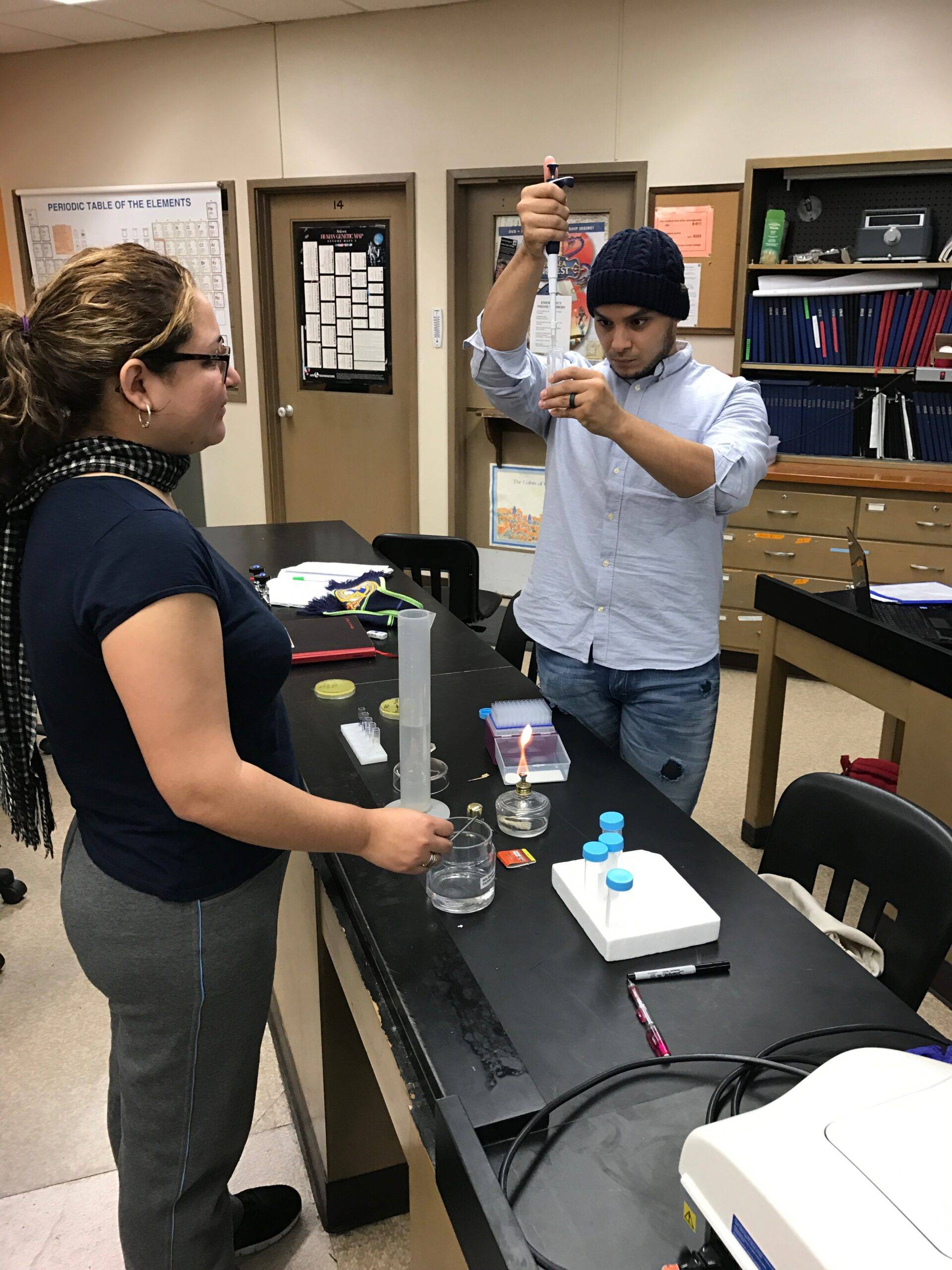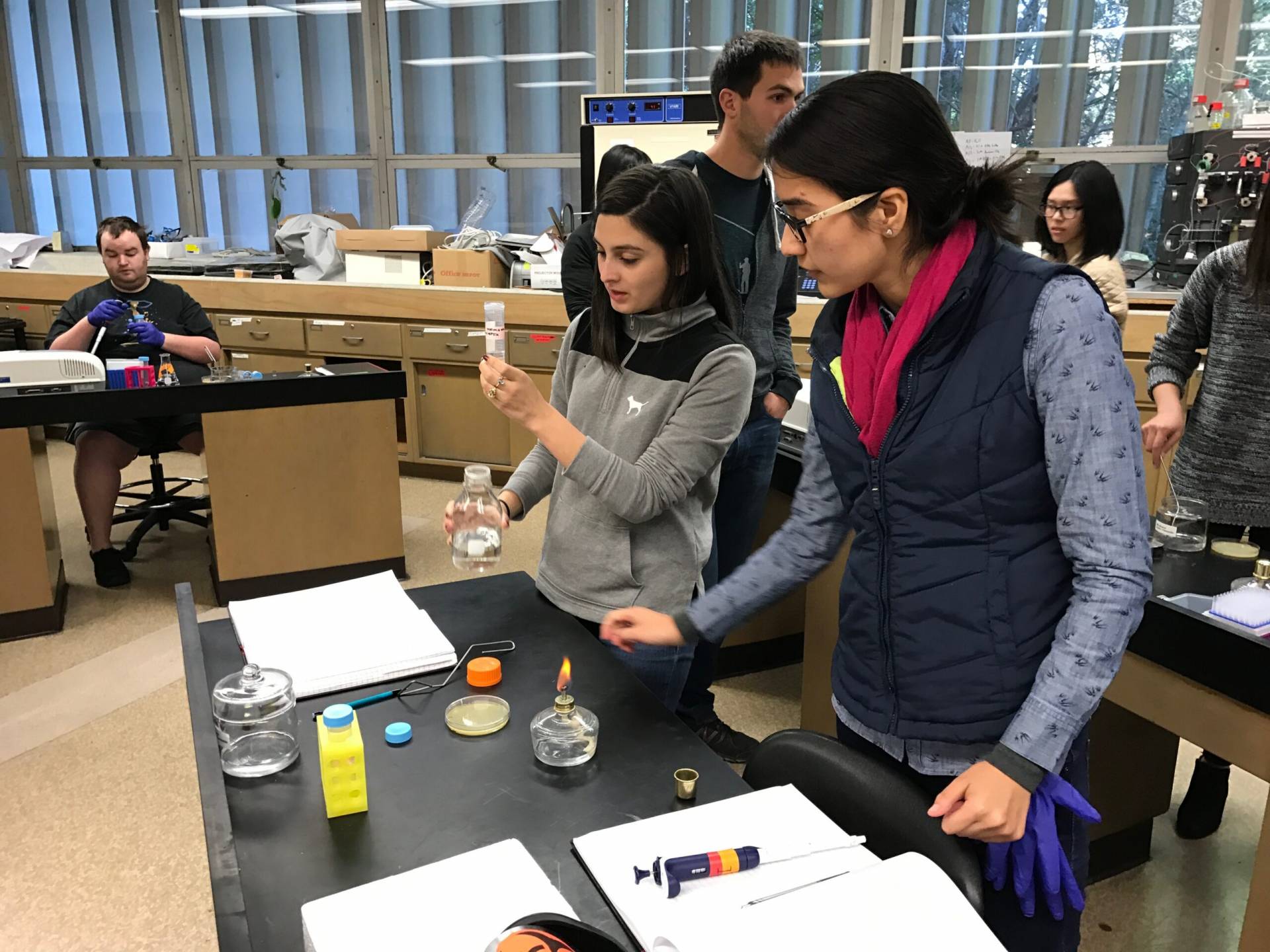BIOSC147: This course, intended for majors, will cover principles and applications of prokaryotic and eukaryotic cell structure and function, biological molecules, homeostasis, cell reproduction and its controls, molecular genetics, classical/Mendelian genetics, cell metabolism including photosynthesis and respiration, and cellular communication. The philosophy of science, methods of scientific inquiry and experimental design are foundational to the course. In the laboratory portion of the course, students will apply techniques and experimental skills commonly used in biotechnology and molecular biology laboratories.
Skills in
- Microscopy
- Scientific method, documentation, reports
- Standard curves
- Cell culture
- Spectrophotometry
- Recombinant protein production
- Column chromatography
- Structures, formulae and functions of simple compounds and basic biological molecules (carbohydrates, lipids, proteins, and nucleic acids).
Knowledge of
- Cell biology and biological molecules
- Cell signaling, metabolism, and growth
- Molecular genetics and gene expression
- Structure and Function of Prokaryotic and Eukaryotic Cells
- Tests of genotypes and phenotypes
- Origin and evolution of cellular life and molecular evolution
- Organelle structure and function
- Membrane structure and function
- Applications of knowledge of natural selection and evolution in Biotechnology and Molecular Biology
- Structure and function of organic molecules
- Relate evolutionary processes to the origin and evolution of cells
Ability to
- Protein purification
- Molecular biology (PCR, agarose gels)
- Genetic analysis, including bioinformatics
- Enzyme assays
- Critical examination and analysis of data
- Genomic DNA extraction
- Polymerase chain reaction (PCR)
- Agarose gel electrophoresis
- Apply the principles of classical and molecular genetics to solve problems in genetics and biotechnology
What types of jobs does it prepare for?
- Research and lab support
- Gene therapies
- Biomanufacturing (including pharmaceuticals)
- Cell and tissue culture
- Clinical research associate
- Genomics
Core competencies
- knowledge of the structure and function of the 4 groups of organic molecules and organelles occurring in living organisms
- knowledge of differences between anabolic and catabolic energy metabolism in cells
- knowledge of the structure of DNA and its expression in protein synthesis and its relationship to inheritance and expression of alleles in different patterns of inheritance
- Accurately set up reaction mixes
- Correctly perform calculations for and prepare buffers
- Construct the flow diagram of gene expression from DNA to protein
- Quantitation of protein or DNA using spectrophotometry and standard curves
- Use of the scientific method to test and modify ideas about our understanding of molecular biology concepts
- Measurement and analysis of photosynthesis under varying environmental and genetic conditions
- Experimental design of growth conditions and metabolic measurements
- Microscopy -preparation and analysis of samples using of dissecting, compound, and fluorescence microscopes.
- Using enzyme activity assays to test predictions about enzyme function under various conditions
- Bioinformatics tools
- Agarose gel electrophoresis
- Phenotypic assays
- Selective media
- Polymerase chain reaction (PCR)











